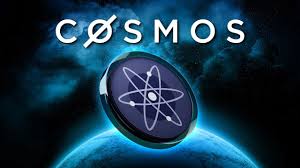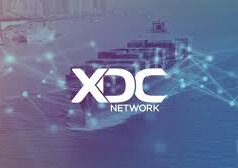The crypto world is a galaxy of innovation, and at its heart lies Cosmos—a blockchain ecosystem that’s redefining how networks talk to each other. If you’ve ever wondered how blockchains can work together seamlessly, like planets orbiting in sync, Cosmos is the answer. It’s not just another blockchain; it’s a framework for building interconnected, scalable, and user-friendly networks. Let’s take a journey through the Cosmos blockchain, unpacking what makes it tick, why it’s a big deal, and how it’s shaping the future of decentralized tech. Buckle up—this is going to be a cosmic ride.
The Cosmos Vision: A Universe of Blockchains
Imagine a world where every blockchain operates in its own silo, unable to share data or value with others. That’s the problem Cosmos set out to solve. Launched in 2019 by the Interchain Foundation, Cosmos is often called the “Internet of Blockchains.” Its big idea? Create a network where independent blockchains—each with its own rules and purpose—can communicate, trade assets, and share data without needing a middleman.
At the core of this vision is interoperability. Most blockchains, like Bitcoin or Ethereum, are walled gardens. Cosmos breaks down those walls using the Inter-Blockchain Communication (IBC) protocol, which lets different chains exchange information securely. Think of it like a cosmic postal service, delivering messages and value between planets (or blockchains) with ease. This makes Cosmos a playground for developers who want to build custom blockchains—called “zones”—that can plug into a broader ecosystem.
The Cosmos Hub: The Center of the Galaxy
Every universe needs a hub, and in Cosmos, that’s the Cosmos Hub. It’s the first blockchain in the ecosystem, acting as a central ledger that connects other chains. The Hub isn’t a dictator, though—it’s more like a friendly space station where zones can dock to share resources. Its native token, ATOM, powers the network, letting users pay fees, stake for security, and vote on governance decisions.
The Cosmos Hub is built using the Cosmos SDK, a toolkit that makes it easy for developers to create their own blockchains. Want to launch a DeFi platform, a gaming ecosystem, or a decentralized social network? The SDK lets you customize your chain while keeping it compatible with the Cosmos ecosystem. This flexibility is why projects like Binance Chain, Terra (before its collapse), and Osmosis call Cosmos home.
How Cosmos Works: The Tech Behind the Stars
Let’s get nerdy for a second. Cosmos is built on a few key components that make it unique:
- Tendermint Core: This is the engine of Cosmos. It’s a consensus mechanism that’s fast, secure, and energy-efficient compared to Bitcoin’s proof-of-work. Tendermint uses a proof-of-stake model, where validators stake ATOM to secure the network and earn rewards. It’s like the gravity that keeps the Cosmos universe in order.
- Cosmos SDK: Think of this as a Lego set for building blockchains. Developers can use pre-built modules to create custom chains without starting from scratch. Need smart contracts? Token transfers? Governance? The SDK has you covered.
- Inter-Blockchain Communication (IBC): This is the magic sauce. IBC lets different blockchains talk to each other, whether they’re built with Cosmos or not (as long as they support IBC). For example, a DeFi app on one chain can borrow assets from another without relying on centralized bridges, which are often hack magnets.
Together, these tools make Cosmos a developer’s dream. You get speed, customization, and connectivity in one package. Plus, unlike some blockchains that choke under heavy traffic, Cosmos scales by letting each zone handle its own transactions, reducing congestion.
Why Developers Love Cosmos
If you’re a developer, Cosmos is like a blank canvas with a built-in support crew. The Cosmos SDK is a big reason why. It’s open-source, modular, and lets you focus on building your app rather than wrestling with low-level code. Want to create a blockchain for a niche use case, like a decentralized marketplace for rare digital art? You can spin up a chain, tweak it to your needs, and plug it into the Cosmos ecosystem for instant interoperability.
Take Osmosis, for example. It’s a decentralized exchange (DEX) built on Cosmos that lets users swap tokens across IBC-enabled chains. Because it’s a Cosmos zone, it’s fast, cheap, and can tap into liquidity from other chains. Or look at Akash Network, a decentralized cloud computing platform that’s basically “Airbnb for servers.” These projects show how Cosmos empowers innovation by giving developers the tools to build without limits.
The ATOM Token: Fuel for the Cosmos
No blockchain is complete without a native token, and for Cosmos, that’s ATOM. It’s not just digital money—it’s the lifeblood of the ecosystem. Validators and delegators stake ATOM to secure the network, earning rewards in return. Users pay transaction fees in ATOM, and governance proposals (like upgrading the network or allocating funds) are voted on by ATOM holders.
But here’s where it gets tricky: ATOM’s value isn’t tied to a single use case, which can make its price volatile. Unlike Bitcoin (digital gold) or Ethereum (smart contract king), ATOM’s worth comes from the health of the Cosmos ecosystem. The more zones that join and use IBC, the more valuable ATOM becomes. It’s a bet on the network’s growth, which is exciting but also risky in a market full of shiny new tokens.
Challenges in the Cosmos
Cosmos isn’t perfect. For one, its decentralized nature means governance can be messy. With so many independent zones, coordinating upgrades or resolving disputes isn’t always smooth. Then there’s the competition—Polkadot, Avalanche, and Layer 2 solutions like Arbitrum are all vying for the interoperability crown. Each has its own strengths, and Cosmos needs to keep innovating to stay ahead.
Security is another concern. While IBC is designed to be secure, cross-chain interactions are complex, and bugs or exploits could cause chaos. Plus, the collapse of Terra (a Cosmos-based project) in 2022 was a black eye for the ecosystem, raising questions about stability. That said, Cosmos has bounced back, with new projects and upgrades showing its resilience.
Real-World Impact: Cosmos in Action
Cosmos isn’t just a tech nerd’s dream—it’s making waves in the real world. Take Regen Network, a Cosmos-based platform that incentivizes sustainable farming by tokenizing carbon credits. Farmers can earn tokens for eco-friendly practices, which are then traded on IBC-enabled markets. It’s a small but powerful example of how Cosmos can tackle global problems.
Or consider dYdX, a decentralized derivatives exchange that moved to Cosmos for better speed and scalability. By running its own chain, dYdX can process trades faster than on Ethereum, all while staying connected to the broader Cosmos ecosystem. These use cases show that Cosmos isn’t just about tech—it’s about enabling solutions that matter.
Navigating the Cosmos: Tips for Users
If you’re curious about diving into Cosmos, here’s how to get started:
- Explore the Ecosystem: Check out projects like Osmosis, Akash, or Regen to see what’s possible. Each zone has its own vibe and use case.
- Get Some ATOM: You can buy ATOM on exchanges like Binance or Kraken. Use it to stake, pay fees, or participate in governance.
- Try a Cosmos Wallet: Keplr is a popular wallet for Cosmos, letting you interact with multiple chains in the ecosystem. It’s user-friendly and supports IBC transfers.
- Stay Safe: As with any crypto, do your research. Stick to reputable projects, and be wary of scams or untested chains.
The Cosmic Road Ahead
Cosmos is a bold experiment in a decentralized future. By prioritizing interoperability, scalability, and developer freedom, it’s carving out a unique space in the blockchain world. Whether you’re a developer building the next big thing, a trader betting on ATOM, or just a curious onlooker, Cosmos offers a glimpse into what’s possible when blockchains work together.
The journey isn’t without bumps—competition, governance, and security challenges loom large. But with a growing ecosystem and real-world impact, Cosmos is proving it’s more than just a starry-eyed idea. It’s a universe where innovation thrives, and the possibilities are as vast as the cosmos itself.




























Maybe include some examples of projects building on Cosmos to make it more tangible
I now get why Cosmos is called the “internet of blockchains.
Cosmos chain struggles with developer adoption compared to Ethereum’s L2s